|
 |
|
page: 1 | 2 | 3 | 4 | 5 | 6 | 7 | 8 | 9
|
|
|
Antofagasta is on the same parallel as Rio de Janeiro in Brasil. Rio receives 1.000 mm of rain, Antofagasta only 4 mm. There is usually no rain for many years and when the rain comes, it comes in big storms. The last torrential rain in 1991 washed away the exits to the Panamericana and the city could only be reached from the Pacific for several days.
|
|
|
|
|
|
|
|
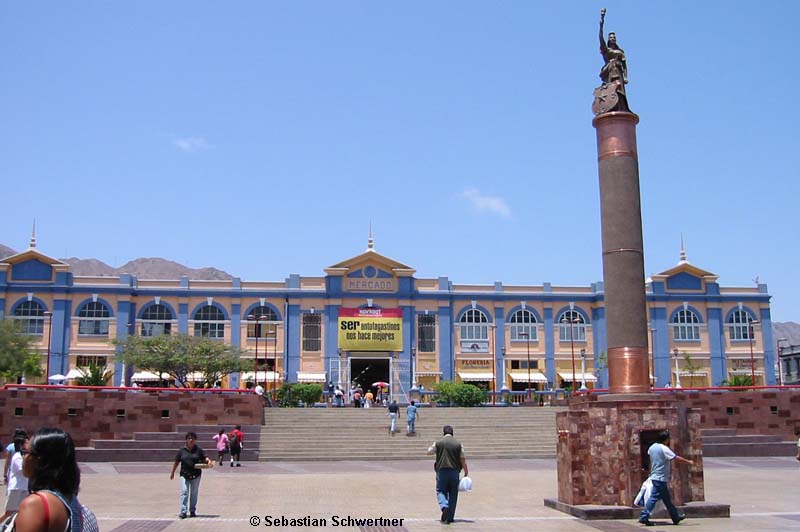 |
|
|
Mercado
|
|
|
|
|
|
Copper freighters
|
|
|
Antofagasta is a modern and green city living off its harbour and the copper smelting plants nearby. Here the mineral resources (copper, lithium and nitrates) of northern Chile are shipped. The city was founded in 1870 by Chileans but was part of Bolivia until the War of the Pacific from 1879 to 1881, when the whole northern area between Arica and Paposo became part of Chile.
I spend a casual day in the city, eat and drink a lot. In the afternoon I pedal a few easy kms to the public beach north of the city near the natural bridge La Portada. But the water is cold so I only swim for a couple of minutes.
|
|
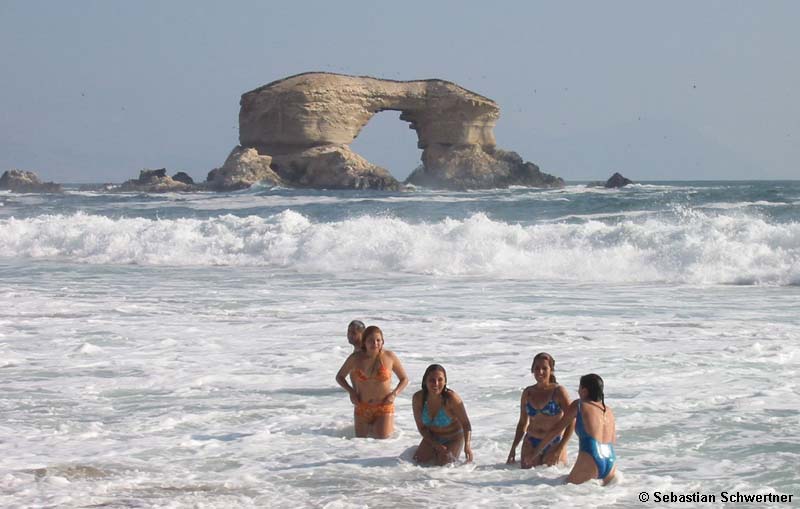 |
|
|
On the beach
|
|
|
One day later I´m happy to be back on the road. The first stretch out of town is steeply uphill to the coastal terrace that is at 800 m. After 30 km I cross the tropic of Capricorn, and in February the sun is straight above me.
|
|
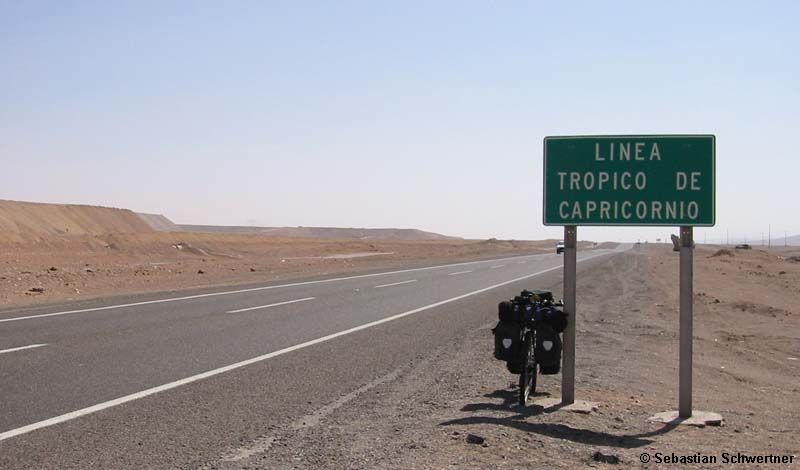 |
|
|
Tropic of Capricorn
|
|
|
The desert landscape dazzles in the sun and the temperatures are above 40°C. I take a lunch break in the station of Baquedano. A desolate village around a railway junction with not much to see. Only once a copper train passes through and the earth is trembling below two diesel engines and over 100 copper waggons. So I´m surprised to find a warehouse where steam engines used to be repaired. There are several historic engines that stand beside the tracks, dislocated by earthquakes. Due to the dry air they are in a surprisingly good condition. Only waiting for coal, water and grease to be started again.
The Atacama is one of the driest areas in the world. This area was totally empty until 1870 when salpetre was discovered here. Salpetre was used for the production of fertilizer and explosives and is water solluble so it can only be found in arid areas. The mines were abandoned around 1930 when the commercial production of nitrates started. Not long afterwards rich copper deposits were discovered and a second boom in the desert started.
|
|
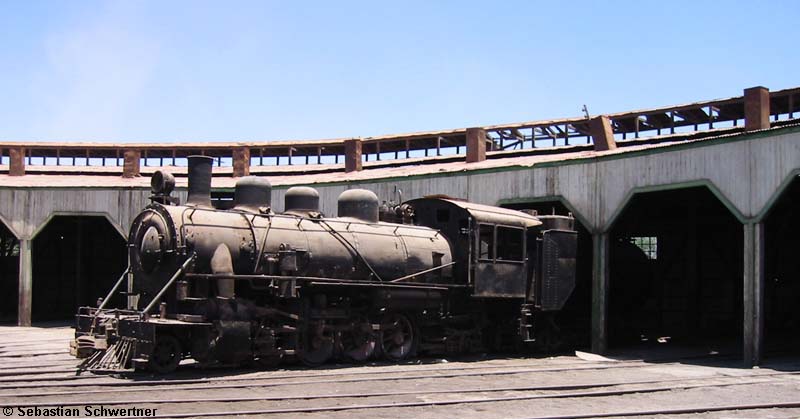 |
|
|
Baquedano
|
|
|
In the afternoon a strong wind from the ocean picks up and pushes me further uphill. In the last light of the day I find a sheltered spot away from the road. It´s been a long day with 170 km and 1.800 m elevation gain and I drank 15 liters of water. So it´s only 80 km to Calama, probably the driest city in the world. The city lives off the nearby coppermine in Chuciquamata. I spend the rest of the day in the shade enjoying yet another ice cream.
|
|
|
|
|
|
|
|
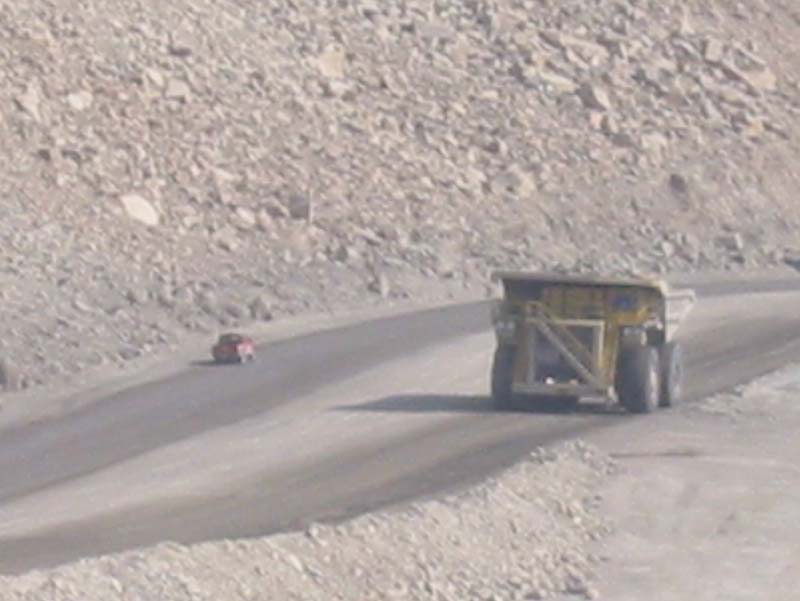 |
|
|
Mining trucks
|
|
|
One day later I join a tour through one of the world´s largest open pit mines. Large trucks drive the ore out of a 1.000 m deep hole. The ores are smelted on the site. Trucks carry up to 450 tons of debris and still look tiny compared to the hole. Their true size can only be seen when a pickup is passing them on the way up or down. But the new site Minera Escondida (200 km further south) is already mining more copper than Chuciquamata.
|
|
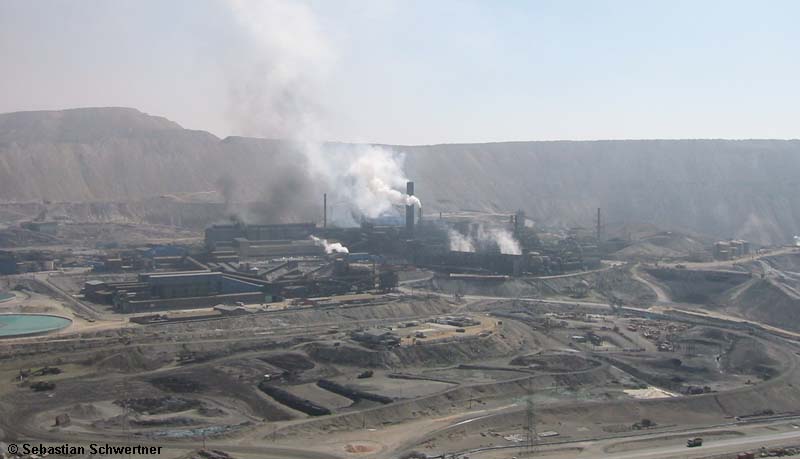 |
|
|
Smeltering plant in Chuquicamata
|
|
|
On the site the ores from other mines are smelted as well. An impressive but not very pleasant sight. At the moment the people of Chuquicamata are relocated to Calama because the mine needs more space for new mine spoils.
In the afternoon I´m back on my bicycle to the El Tatio Geyser field. It´s only 121 km but it´s uphill to 4.500 m.
|
|
|
|
|
|
|
|
|
The first few kilometers are through the outskirts of Calama, later the road is running through Chiu Chiu the first of several indigenous villages. At the village limits the paved road ends and starts again at the other end. To keep the status as an UNESCO world heritage site, the roads inside the village aren´t to be paved. What a strange regulation. I have dinner here and meet the first cyclist since the Carretera Austral four weeks ago. She is from Santiago and has problems with her brakes, which are easy to fix.
|
|
 |
|
|
Chiu Chiu
|
|
|
From Chiu Chiu the road runs through some of the driest areas of the Atacama. It hasn´t rained here for more than 100 years. Later the road starts climbing and I pitch my tent in a dry river bed next to the road and enjoy a fantastic starlit sky.
|
|
|
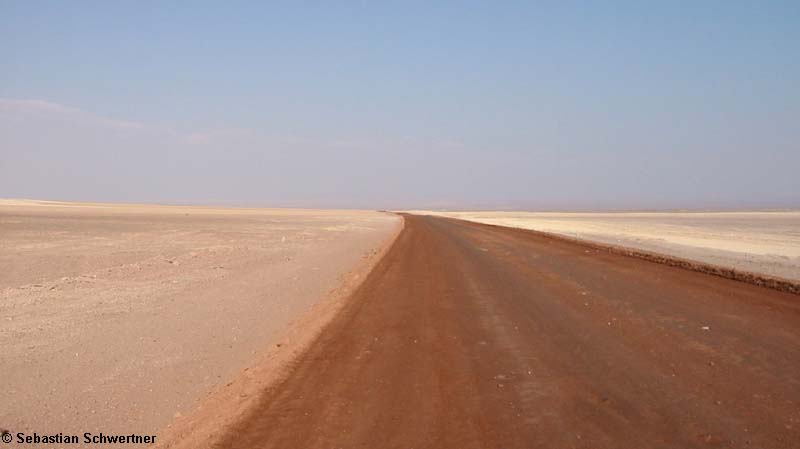
|
|
|
Atacama
|
|
| The next morning I pedal 15 km to Caspana and take a rest day here at 3.000 m for acclimatization. Caspana is a pretty village of around 400 people that are of indigenous origin. Fields are terraced and water comes from the Andes. The second source of income are tour groups that visit the Tatio geysers and stop here for lunch on the way back to Calama.
|
|
 |
|
|
View back to Caspana
|
|
| The road to the geysers continues steeply from Caspana. Above 3.500 m the desert is blooming, because of summer rain during the previous week. Small yellow bushes, big red flowers and green leaves are on the ground. Finally there is wildlife too. Llamas, vicuñas, wild donkeys, rabbits, lizards and many different birds. Around noon I´m at 4.000 m, I´ve never been that high before. My breathing is fast and cycling uphill makes my legs go sore in no time. A headache is coming too. So I sleep for two hours in the shade covered with a fleece for the first time since Pucon.
|
|
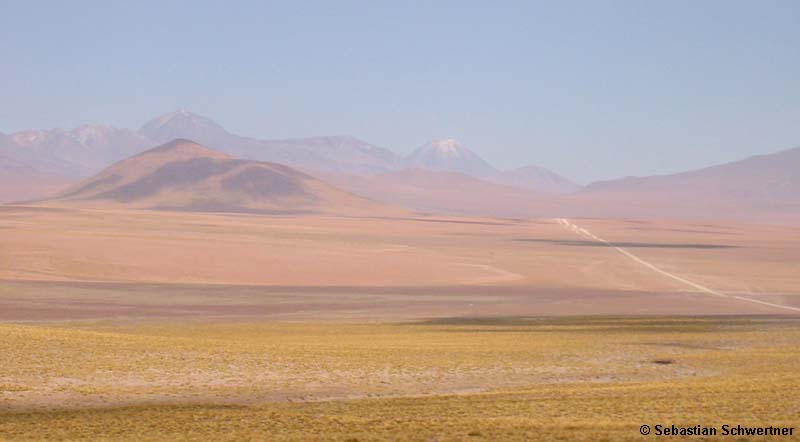 |
|
|
At 4.000 m
|
|
| In the evening I´m at the geysers and take a bath in a warm pool. The temperature is easy to adjust, at the entrance the water is 25°C and where the hot water enters it´s more than 80°C. It´s very pleasant to end a hard day cycling in warm soft thermal water.
|
|
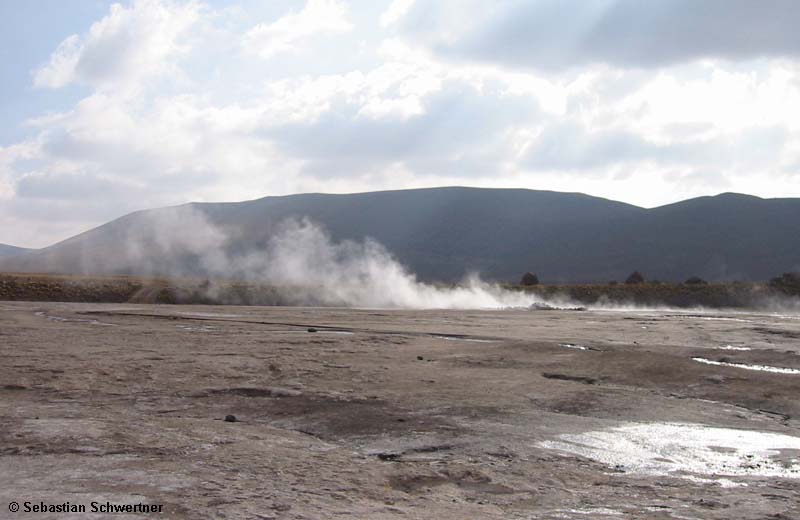 |
|
|
El Tatio Geysers at 4.300 m
|
|
|
Next to the geyser field is a construction site. Some hot wells are going to be used for generating power for Caspana. But no spare parts are available at the moment so the workers have left. Only Ariel is guarding the camp. He is pretty lonely up here since his power generator quit. He invites me for dinner in the big common kitchen and I´m showing pictures from my trip. I can sleep in one of the empty containers for two nights.
|
|
|
page: 1 | 2 | 3 | 4 | 5 | 6 | 7 | 8 | 9
|
|

